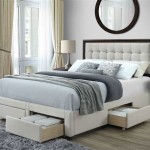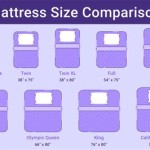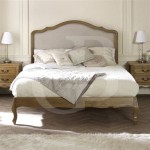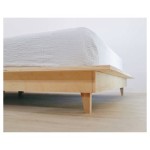King Size Bed For Small Room: Maximizing Space and Comfort
The allure of a king-size bed is undeniable. Its spaciousness offers unparalleled comfort and freedom of movement, contributing to a restful sleep experience. However, the prospect of accommodating such a large bed within the confines of a small room often presents a significant challenge. This challenge necessitates a careful consideration of spatial constraints, strategic design choices, and innovative furniture arrangements to create a functional and aesthetically pleasing environment.
Successfully incorporating a king-size bed into a smaller bedroom is indeed achievable. It requires a deliberate approach focused on optimizing the available space and strategically selecting elements that work harmoniously together. The key lies in understanding the room's dimensions, identifying potential limitations, and implementing solutions that maximize both comfort and functionality.
Evaluating Room Dimensions and Layout
Before making any decisions regarding furniture or design, a thorough assessment of the room's dimensions is crucial. Accurate measurements of the length, width, and height are necessary to determine the actual usable space. Consider the placement of doorways, windows, and closets, as these elements will influence the layout and restrict furniture placement. A floor plan, even a simple sketch, can be invaluable in visualizing different arrangements and identifying potential problem areas.
Understanding the flow of traffic within the room is also essential. Ensure that there is ample space to move around the bed comfortably without obstruction. A minimum of two feet of clearance around the bed is generally recommended, though this may be adjusted depending on individual needs and preferences. If space is particularly limited, consider prioritizing one side of the bed for easier access.
The height of the ceilings should not be overlooked. Lower ceilings can make a room feel cramped, particularly with a large bed dominating the space. In such cases, opting for a low-profile bed frame can help create a sense of spaciousness. Conversely, high ceilings can allow for more vertical storage solutions, such as tall bookshelves or wardrobes, to compensate for the bed's footprint.
Strategic Bed Frame Selection and Placement
The choice of bed frame plays a significant role in maximizing space in a small room. Traditional bed frames often have bulky headboards and footboards that consume valuable square footage. Opting for a minimalist bed frame with clean lines and minimal ornamentation can help create a more streamlined and open feel. Platform beds, which sit lower to the ground, can also visually expand the space.
Storage beds, featuring built-in drawers or compartments underneath the mattress, offer a practical solution for maximizing storage in a small bedroom. These beds provide discreet and easily accessible storage for bedding, clothing, or other personal items, reducing the need for additional bulky dressers or storage units. The added functionality of a storage bed can significantly contribute to a more organized and clutter-free environment.
The placement of the bed within the room is equally important. In most cases, the best location for a king-size bed in a small room is against the longest wall. This allows for a more balanced distribution of space and prevents the bed from overwhelming the room. Avoid placing the bed directly in front of a window, as this can block natural light and make the room feel smaller. If possible, position the bed so that it is easily accessible from both sides.
Maximizing Vertical Space and Storage Solutions
In small rooms, leveraging vertical space is crucial for maximizing storage and functionality. Tall bookshelves, wardrobes, and floating shelves can provide ample storage without taking up valuable floor space. These vertical storage solutions can be used to store clothing, books, decorative items, and other personal belongings, keeping the room organized and clutter-free. Optimizing vertical storage allows you to reclaim valuable floor area, making the room feel more spacious and comfortable.
Wall-mounted bedside tables or shelves can serve as alternatives to traditional nightstands. These floating surfaces not only save space but also create a more modern and minimalist aesthetic. They provide a convenient place to keep essential items, such as a lamp, a book, or a phone charger, without cluttering the floor. Furthermore, wall-mounted lighting fixtures, such as sconces or adjustable reading lights, can free up space on bedside tables and provide focused illumination.
Utilizing the space under the bed is another effective storage strategy. Low-profile storage containers, specifically designed to fit under beds, can be used to store items such as out-of-season clothing, extra blankets, or linens. These containers are typically made from durable materials and feature lids to protect the contents from dust and moisture. Cleverly utilizing this often-overlooked space can significantly increase the storage capacity of the room.
Mirrors are invaluable tools for creating the illusion of space. Strategically placing a large mirror, or a collection of smaller mirrors, on a wall can reflect light and visually expand the room. Mirrors can also be used to create the illusion of depth, making the room feel less cramped. Consider placing a mirror opposite a window to maximize the amount of natural light reflected into the room.
Color schemes play a crucial role in the overall perception of space. Lighter colors tend to make rooms feel larger and brighter, while darker colors can make rooms feel smaller and more enclosed. Opting for a light and airy color palette, such as whites, creams, or pastels, can help to create a more spacious and inviting atmosphere. Consider using accent colors sparingly to add visual interest without overwhelming the space.
The selection of furniture beyond the bed should also be carefully considered. Choose multi-functional furniture pieces that serve multiple purposes. For example, an ottoman with built-in storage can function as both a seating area and a storage container. A desk with a folding top can be used as a workspace when needed and then folded away to save space when not in use. Prioritizing multi-functional furniture can help to minimize clutter and maximize the usability of the room.
Finally, maintaining a clutter-free environment is essential for making a small room feel larger and more comfortable. Regularly decluttering and organizing personal belongings can significantly improve the overall sense of spaciousness. Consider adopting a minimalist approach to interior design, focusing on essential items and minimizing unnecessary decorations. A clean and organized room will always feel larger and more inviting than a cluttered and disorganized one.

King Size Bed Small Bedroom Make Your Room Feel Bigger

How To Fit A King Size Bed Into Small Bedroom Young House Love

17 Best King Size Bed In Small Room Ideas Bedroom Design Decor

How I Fit A King Size Bed In My Small Bedroom And You Can Too Smallish Home

Small Bedroom With King Size Bed Dilemma

How To Decorate A Small Bedroom With King Size Bed 12 Ideas Try Life Stylishly

King Size Bed Small Bedroom Make Your Room Feel Bigger

Small Bedroom Design Sleepopolis

Making A King Bed Work In Small Bedroom Tallproblems This Giant Life

The Minimum Room Size For A King Bed Decoholic








